A major redevelopment project is in the works at the Lewis C. Cassidy Elementary School at 6523 Lansdowne Avenue in Overbrook, West Philadelphia, spanning an entire city block bound by Lansdowne Avenue to the south, Haddington Lane to the north, Atwood Road to the east, and Kenmore Road to the west. Designed by Ewing Cole, the new school building will rise three stories and span 87,727 square feet, offering space for 570 students in Pre-K through eighth grade. While we admire the contemporary design and the city’s $30-million investment in state-of-the-art educational space, we are concerned with the fact that the project involves a full demolition of a stately prewar school building.
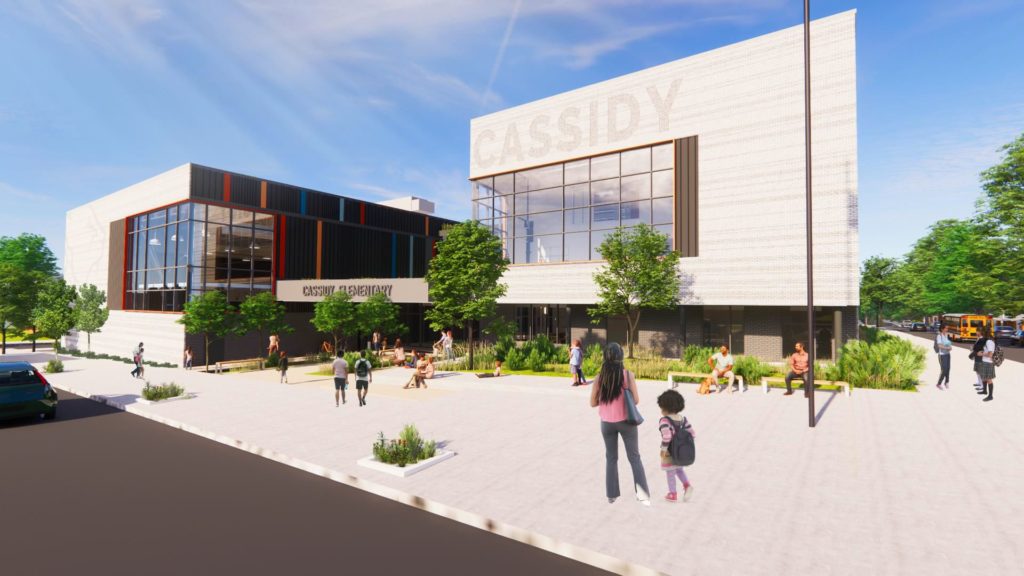
Lewis C. Cassidy Elementary School at 6523 Lansdowne Avenue. Credit: Ewing Cole via the Civic Design Review
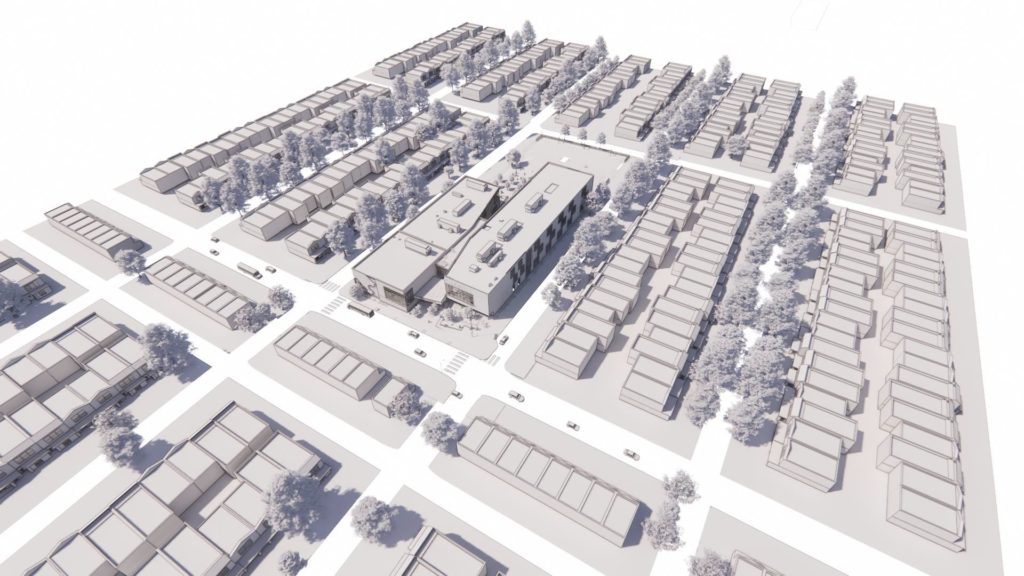
Lewis C. Cassidy Elementary School at 6523 Lansdowne Avenue. Credit: Ewing Cole via the Civic Design Review
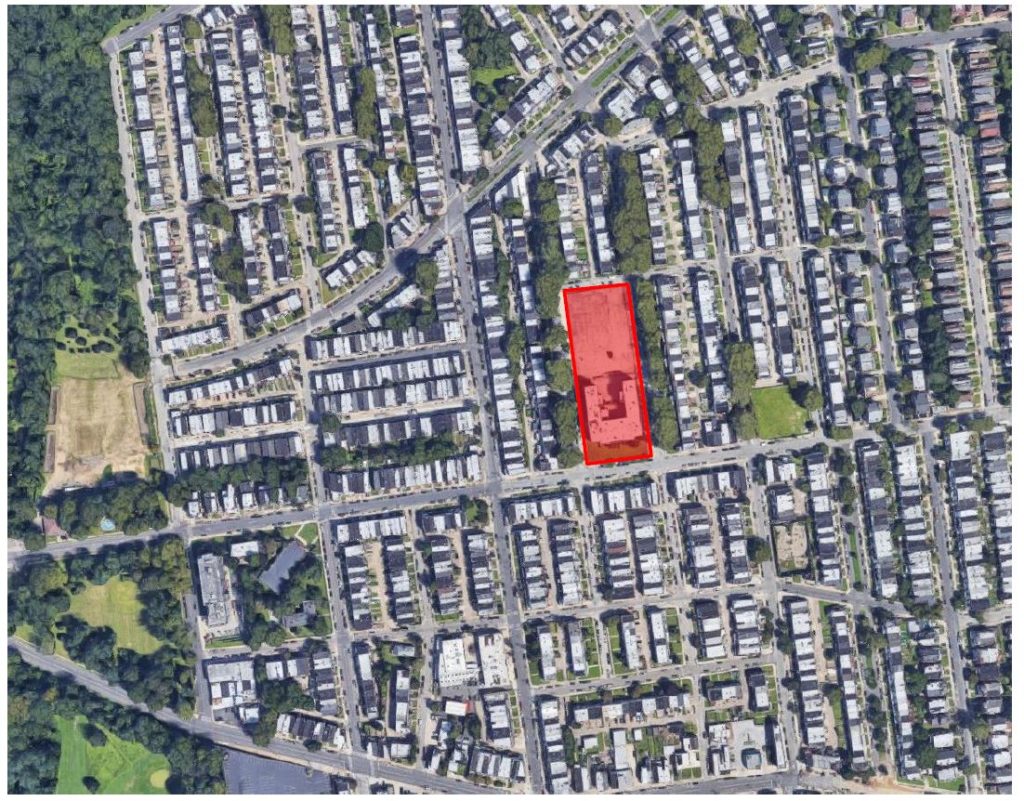
Lewis C. Cassidy Elementary School at 6523 Lansdowne Avenue. Credit: Ewing Cole via the Civic Design Review
Overbrook Park is a quaint neighborhood situated in the western section of West Philadelphia, where cozy prewar rowhomes with green front yards and covered porches overlook tree-lined streets. Within this landscape, the stately Lewis C. Cassidy Elementary School, built in a brick-and-stone Beaux Arts style in the prewar period, stood as an understated yet imposing neighborhood focal point for decades.
The school building took up only around a quarter or so of the total site footprint, with the majority of the remaining space relegated for a stately front yard, a tight courtyard in the center, and large school yard in the rear, northern section of the site.
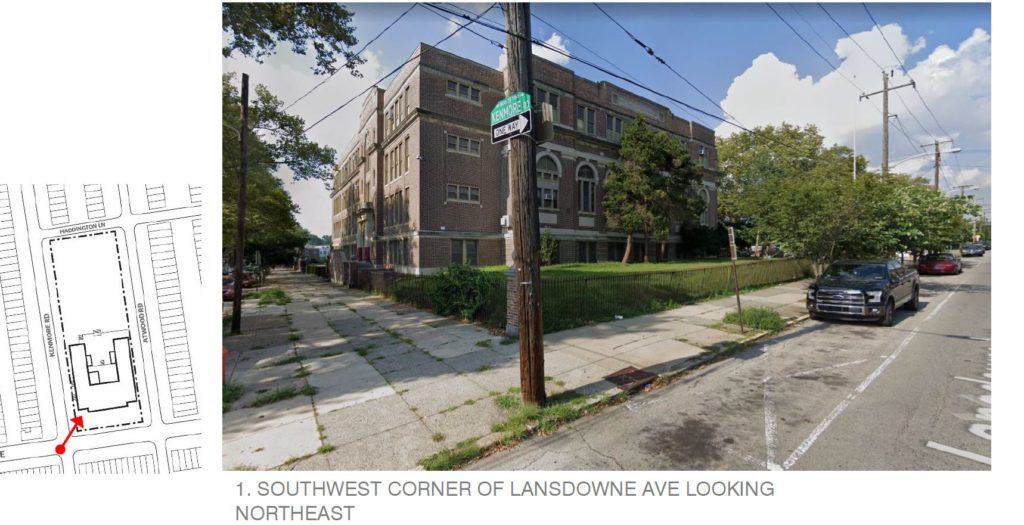
Lewis C. Cassidy Elementary School at 6523 Lansdowne Avenue, prior to demolition. Credit: Ewing Cole via the Civic Design Review

Lewis C. Cassidy Elementary School at 6523 Lansdowne Avenue, prior to demolition. Credit: Ewing Cole via the Civic Design Review
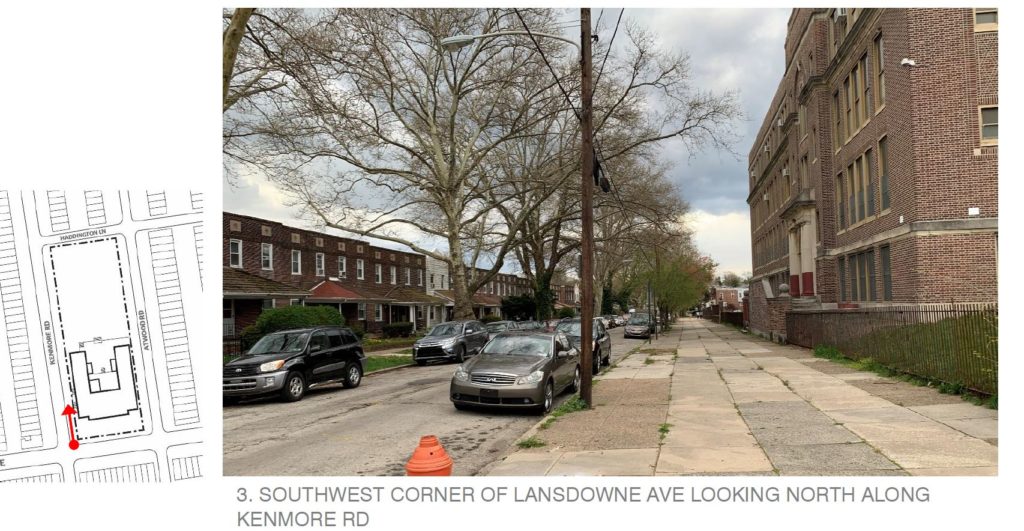
Lewis C. Cassidy Elementary School at 6523 Lansdowne Avenue, prior to demolition. Credit: Ewing Cole via the Civic Design Review
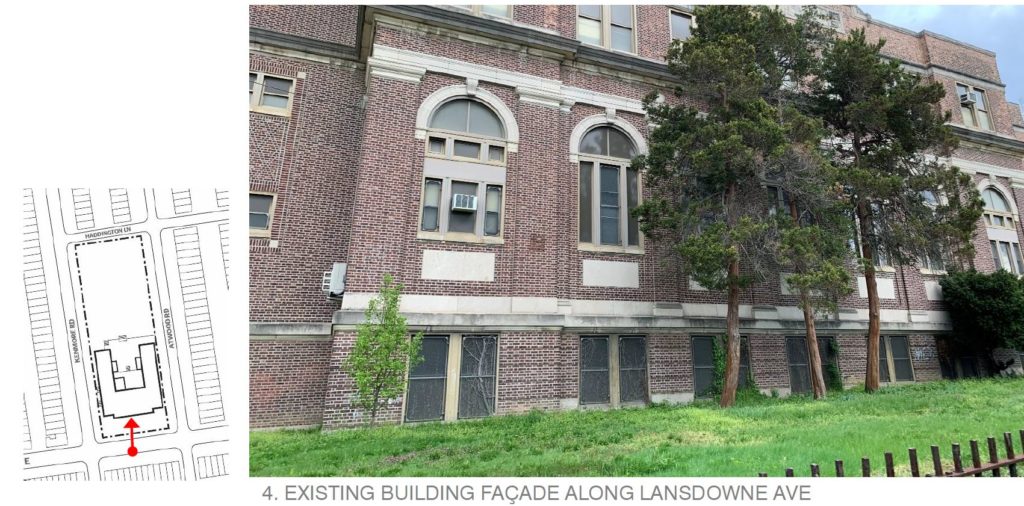
Lewis C. Cassidy Elementary School at 6523 Lansdowne Avenue, prior to demolition. Credit: Ewing Cole via the Civic Design Review
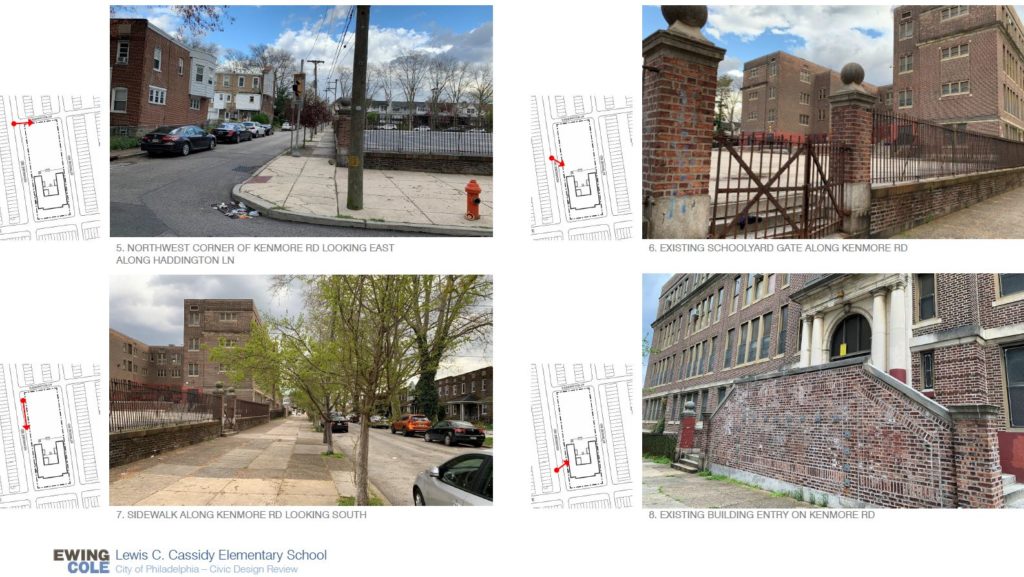
Lewis C. Cassidy Elementary School at 6523 Lansdowne Avenue, prior to demolition. Credit: Ewing Cole via the Civic Design Review
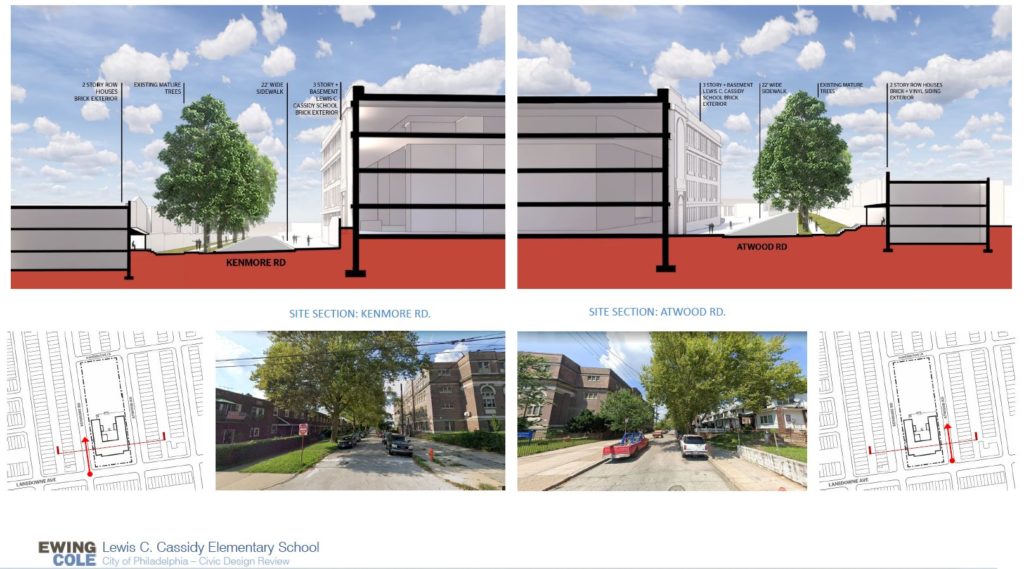
Lewis C. Cassidy Elementary School at 6523 Lansdowne Avenue, prior to demolition. Credit: Ewing Cole via the Civic Design Review
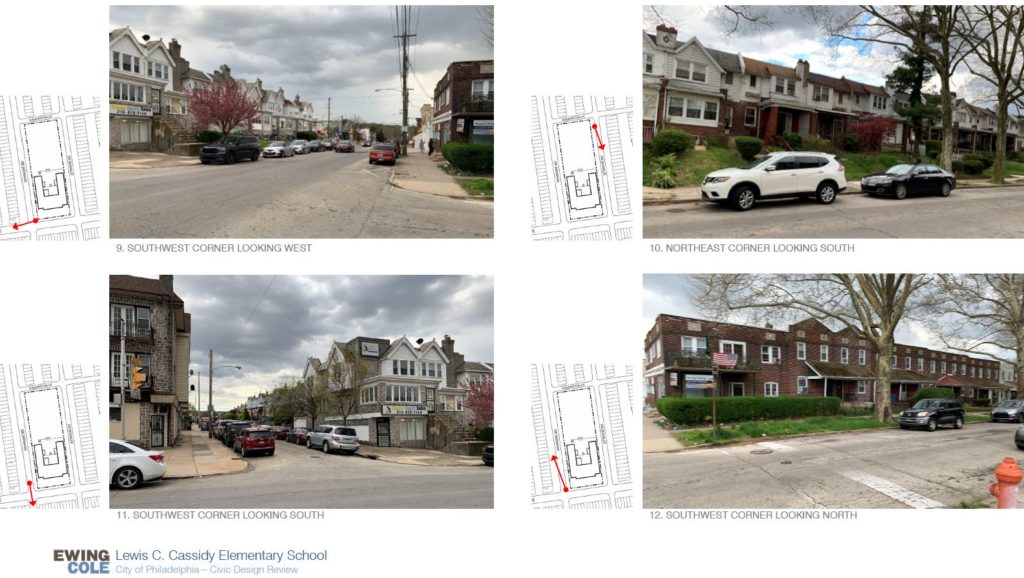
The neighborhood around the Lewis C. Cassidy Elementary School at 6523 Lansdowne Avenue. Credit: Ewing Cole via the Civic Design Review
Construction of additional school wings next to their prewar counterparts is common practice in cities across the country, particularly in Northeast cities where prewar school buildings predominate. Shockingly, no such plan has been implemented for the redevelopment at the Lewis C. Cassidy Elementary. The current plan calls for a complete demolition of the entire school building and a replacement with an entirely new structure. Demolition permits were issued in January, and although YIMBY could not independently confirm the current status of the project, a city website currently describes the demo status as “90 percent complete.”
On its own terms, the replacement building planned for the site is an attractive, avant-garde project that is sure to inspire the imagination of future generations, and its amply-sized rear yard preserved plentiful space for outdoor activities. And while we understand the challenges and financial considerations that go into any development, public and private alike, and the concerns regarding preserving aging buildings, we cannot help but wonder whether the existing structure could had been incorporated into the redevelopment plan.
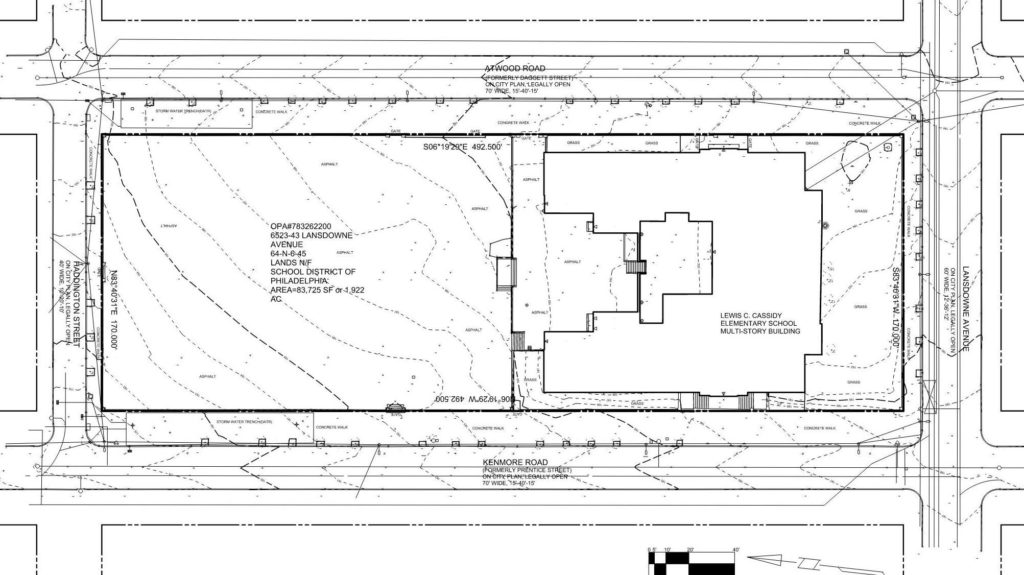
Lewis C. Cassidy Elementary School at 6523 Lansdowne Avenue. Credit: Ewing Cole via the Civic Design Review
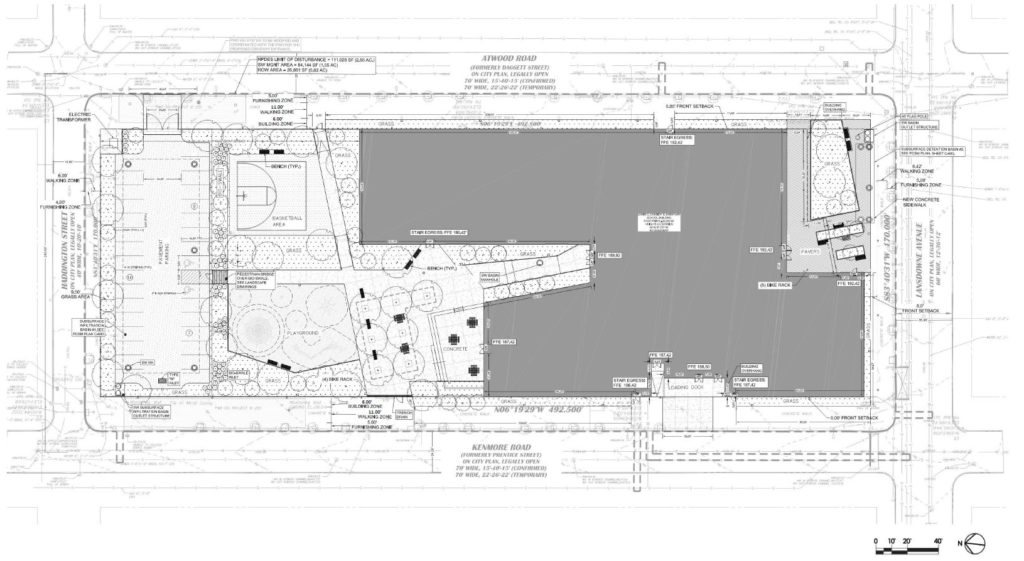
Lewis C. Cassidy Elementary School at 6523 Lansdowne Avenue. Credit: Ewing Cole via the Civic Design Review
Demolition permits state that the prewar building spanned 56,898 square feet, roughly two-thirds of the replacement building’s total floor area. Permits list a demo cost of $1.9 million, which accounts for six percent of the $30-million project cost, yet, in our dilettante guess, perhaps as much as $10 million or more could had been saved if the existing building were incorporated into the new development. Furthermore, the new building lacks a basement, which could have accommodated administrative and/or service functions (which would still have access to daylight were the basement ceiling raised even a couple of feet above street level) and would have allowed to preserve more of the footprint for outdoor space.
With rare exceptions, YIMBY supports new development in Philadelphia, and we realize that public services, particularly schools, form a backbone for urban growth. As such, we look forward to the construction of the new Lewis C. Cassidy Elementary School, and hope that the city made prudent calculations in terms of razing the massive prewar building and its wholesale replacement, and that our observer assessment missed the fiduciary mark. However, we do not shy away from exploring alternate planning opportunities if they may mean preservation of the city’s rarefied historic building stock and potential savings of taxpayer funds, and continue to encourage the city to reinforce programs that reward combination of preservation and adaptive reuse with new development.
Subscribe to YIMBY’s daily e-mail
Follow YIMBYgram for real-time photo updates
Like YIMBY on Facebook
Follow YIMBY’s Twitter for the latest in YIMBYnews

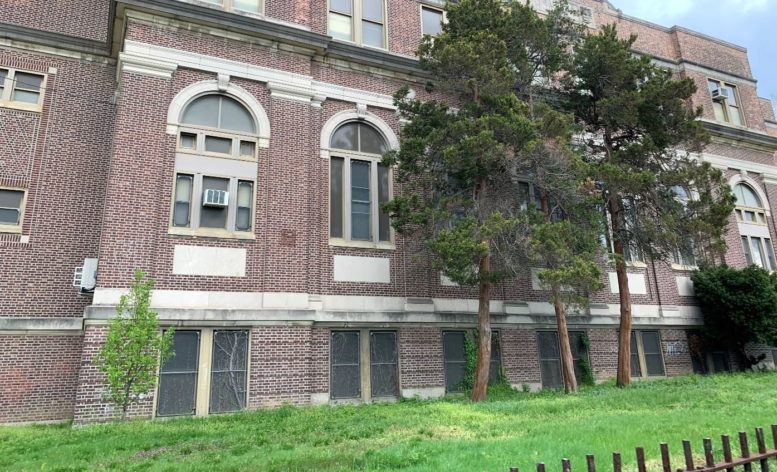
Unfortunately when it comes to city government in Philadelphia there is a lack of vision. The existing building could have been saved and adapted into an amazing new school.
There should be a law against tearing down pre-war buildings!!
Shame on them!! To tear down a beautiful pre war building
that is probably fireproof when it could have been restored
and at a savings of 10m!! Philadelphia is losing ALL of its
CLASS.
Definitely needs to be considered by the Preservation Alliance for historical protection.
I grew up at 817 Atwood Road. I frequented summer playground at Cassidy School. My brother played many basketball games on the b ball courts! Many wonderful memories!